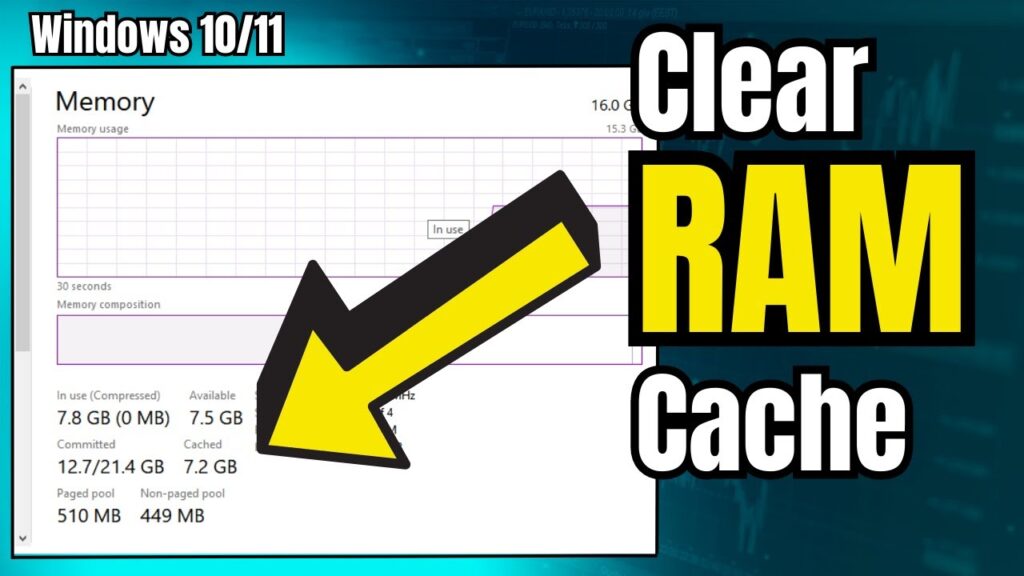Understanding RAM and Its Importance
Random Access Memory (RAM) is a crucial component in computing devices, acting as the short-term memory that stores data temporarily for quick access by the processor. Unlike long-term storage devices like hard drives or SSDs, RAM is volatile, meaning it loses its data when the power is turned off. The efficiency of RAM directly impacts a computer’s performance, making it essential to manage and optimize RAM usage effectively.
What is RAM?
RAM is a type of computer memory that allows data to be read and written quickly. It is used to store the operating system, application programs, and currently processed data so that they can be quickly reached by the device’s processor. The speed of RAM is significantly faster than that of hard drives, which is why having adequate RAM is vital for smooth multitasking and performance.
Why is Clearing RAM Necessary?
Over time, as applications are opened and closed, RAM can become cluttered with data from programs that are no longer in use. This can lead to slow performance, system crashes, or even freezes. Clearing RAM can help free up space, allowing your computer to run more efficiently.
Methods to Clear RAM
Here are several effective methods to clear RAM on both Windows and Mac systems:
1. Restart Your Device
Restarting your computer is one of the simplest ways to clear RAM. This action terminates all running processes, freeing up memory that was previously occupied by applications.
2. Use Task Manager (Windows) or Activity Monitor (Mac)
- Windows: Press
Ctrl + Shift + Escto open Task Manager. Here, you can view running applications and processes. Right-click on any unnecessary process and select “End Task” to free up RAM. - Mac: Open Activity Monitor from Applications > Utilities. Select the processes you want to terminate and click the “X” button to quit them.
3. Clear Cache and Cookies
Web browsers store cache and cookies to speed up browsing. However, this can consume significant RAM. Clearing your browser’s cache can help free up memory.
4. Update Software
Outdated software can be inefficient and may use more RAM. Regularly updating your operating system and applications can improve performance and memory management.
5. Remove Unused Extensions
Browser extensions can consume RAM. Regularly review and remove extensions that you no longer use.
6. Optimize Startup Programs
Many programs automatically run at startup, consuming RAM. Disable unnecessary startup applications via Task Manager on Windows or System Preferences on Mac.
7. Use RAM Cleaning Software
There are various applications designed to optimize and clean RAM. These tools can help manage memory usage more efficiently.
8. Increase Virtual Memory
Virtual memory allows your system to use hard drive space as additional RAM. Adjusting virtual memory settings can help improve performance when RAM is low.
9. Upgrade RAM
If you frequently run out of RAM, consider upgrading your hardware. Adding more RAM can significantly improve performance, especially for resource-intensive tasks.
Table: Comparison of RAM Management Techniques
| Method | Description | Effectiveness |
|---|---|---|
| Restart Device | Clears all running processes | High |
| Task Manager/Activity Monitor | Manually end processes | Medium |
| Clear Cache and Cookies | Removes stored data from browsers | Medium |
| Update Software | Improves efficiency of applications | High |
| Remove Unused Extensions | Frees up memory used by browser extensions | Medium |
| Optimize Startup Programs | Reduces memory usage at startup | High |
| Use RAM Cleaning Software | Automates memory management | Medium |
| Increase Virtual Memory | Utilizes hard drive space as additional RAM | Medium |
| Upgrade RAM | Physically increases available memory | Very High |
FAQs about RAM
Can I download more RAM?
No, RAM cannot be downloaded. It is a physical component that must be installed in your computer.
How do I know how much RAM I have?
You can check your RAM by:
- Windows: Right-click on “This PC” > Properties.
- Mac: Click on the Apple logo > About This Mac.
How much RAM should be used at idle?
Typically, 30% to 50% of available RAM may be in use when the system is idle, depending on the total amount of RAM installed.
What causes high RAM usage?
Common causes include running too many applications simultaneously, background processes, and memory leaks in software.
How can I stop high RAM usage?
To reduce high RAM usage, close unnecessary applications, disable startup programs, and regularly clear cache and cookies.
Conclusion
Managing RAM effectively is essential for maintaining optimal computer performance. By utilizing the methods outlined above, users can clear RAM and ensure their systems run smoothly. For more detailed information about RAM, you can refer to resources like Wikipedia or government websites that discuss computer memory and performance optimization.



